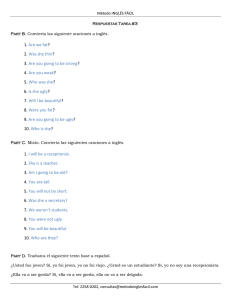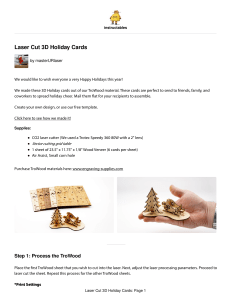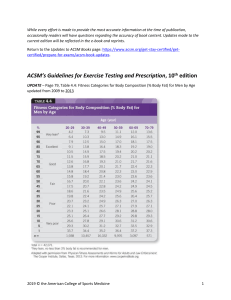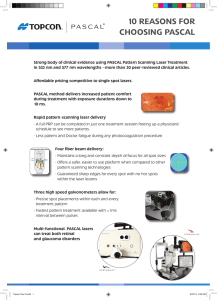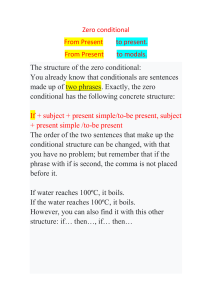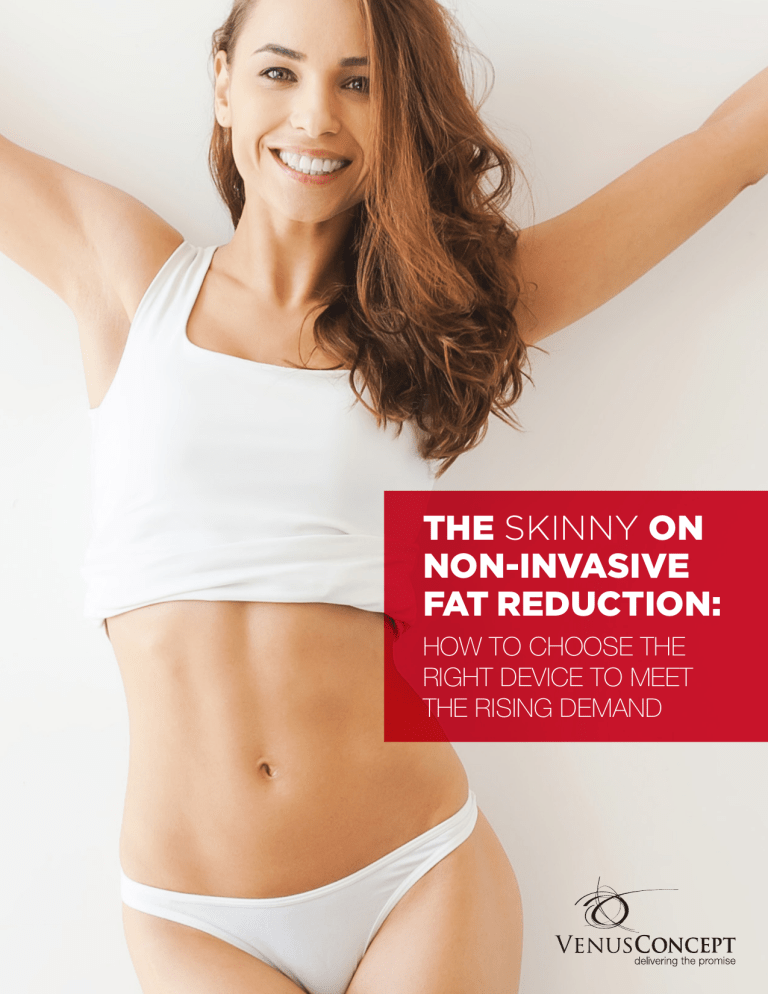
THE SKINNY ON NON-INVASIVE FAT REDUCTION: HOW TO CHOOSE THE RIGHT DEVICE TO MEET THE RISING DEMAND Demand for non-invasive fat reduction procedures is skyrocketing as consumers welcome treatments that achieve noticeable results with little downtime or discomfort. In fact, non-invasive body contouring is the fastestgrowing area of cosmetic dermatology, according to a 2018 report by Cutis1, and the number of nonsurgical fat reduction procedures performed tripled from 2012 to 2017, as reported by the American Society of Aesthetic Plastic Surgeons.2 This growth shows no sign of slowing. The global non-surgical fat reduction market is expected to expand at 15.9% CAGR and be valued at $2.5 billion by 2025, based on forecasts by Transparency Market Research.3 Much of the growth in aesthetic body treatments has been triggered by innovations in device technology. As a medical aesthetics professional, you want to provide your clients the safest and most effective treatments while maintaining a strong ROI. Choosing the right therapies to offer is an important part of that decision-making process. In this guide, we will cover the leading fat reduction devices as well as important considerations for incorporating them into your practice, drawn Moreover, the male market is growing faster than from Venus Concept’s work with high-performing the female market, a rarity in aesthetics.4 In fact, a aesthetic clinics in more than 60 countries and 29 majority of men and women agreed in a survey that direct markets. the stomach is the body part they worry about most, and the waist was the top source of concern for a third of all adults.5 Rzepecki, A. K., Farberg, A. S., Hashim, P. W., & Goldenberg, G. undefined. (2018). Update on Noninvasive Body Contouring Techniques. Cutis, 101(4), 285–288. Retrieved from https://www.mdedge.com/dermatology/article/162644/aesthetic-dermatology/update-noninvasive-body-contouring-techniques 2 American Society of Plastic Surgeons. (2019). 2018 National Plastic Surgery Statistics. Retrieved from https://www.plasticsurgery.org/documents/News/ Statistics/2018/plastic-surgery-statistics-report-2018.pdf 3 Transparency Market Research (2017). Non-invasive Fat Reduction Market Worth US$2.50 Billion by 2025, Globally: Transparency Market Research [Press release]. Retrieved from https://www.prnewswire.com/news-releases/non-invasive-fat-reduction-market-worth-us250-billion-by-2025-globallytransparency-market-research-652491873.html 4 American Society for Aesthetic Plastic Surgery. (2018). 2018 Cosmetic (Aesthetic) Surgery National Data Bank Statistics. Retrieved from https://www. surgery.org/sites/default/files/ASAPS-Stats2018_0.pdf 5 Mannino, B. (2014, February 24). TODAY/AOL ‘Ideal to Real’ body image survey results. Retrieved from http://www.aol.com/article/2014/02/24/ loveyourselfie/20836450/ 1 DEVICE LANDSCAPE FOR FAT REDUCTION Fat reduction device technology has been refined over the past decade, and current modalities include radio frequency, ultrasound, laser, and cryolipolysis. These techniques do not achieve the magnitude of fat reduction that surgical liposuction does, but they generally entail no major recovery period and minimal discomfort. “Many patients prefer these devices because there’s less downtime. They don’t want pain. They don’t want time away from work,” Dr. Mathew M. Avram, Director of Laser, Cosmetics, and Dermatologic Surgery at Massachusetts General Hospital explained to Internal Medicine News.6 The different devices have varying mechanisms of action, but they all seek to damage or destroy fat cells, which are then eliminated by the body. The most exciting breakthrough has been in the area of laser lipolysis, and we’ll cover recent advances there including the newest offering that, for the first time, delivers non-invasive lipolysis along with other complementary body treatments using the same device. 6 Brunk, D. (2018, September 16). Noninvasive fat removal devices continue to gain popularity. Retrieved from https://www.mdedge. com/internalmedicine/article/174914/aesthetic-dermatology/ noninvasive-fat-removal-devices-continue-gain MANY PATIENTS PREFER THESE DEVICES BECAUSE THERE’S LESS DOWNTIME. CRYOLIPOLYSIS Cryolipolysis was the first type of treatment approved by the U.S. Food and Drug Administration for fat reduction, and it destroys fat cells by freezing them. Since the first device’s approval in 2010, millions of procedures have been performed. Other common side effects include bruising, swelling, tingling, and numbness. The treated area must be massaged after the procedure, which patients often describe as painful and adds to treatment time, and the suction applicator can cause sharp demarcations between treated and untreated areas, termed as In studies, the treatment is well tolerated with minimal shelving or shark bites.12 to tolerable discomfort and 73 percent patient satisfaction.7 However, anecdotally, patients and In anecdotal reports, people who have received practitioners report that pain and discomfort are not cryolipolysis describe the treatment experience uncommon, and some patients have delayed onset variously as “virtually painless”13 compared to the twopain requiring pain medication.8,9 After three months, minute post-procedure massage of the treated area caliper measurements showed an average 23 percent as “the 120 most painful seconds of my life.”14 reduction in fat layer thickness.10 It’s also important to note complaints from providers It should also be noted that an adverse event called about consumable costs with the most common paradoxical adipose hyperplasia (PAH)—a hardened cryolipolysis device, which range from $600 to $900 area of localized fat developing after cryolipolysis— per treatment area. “The very high consumable costs “is a rare complication of cryolipolysis that may occur will drive you crazy,” the Executive Director for the more frequently than in the manufacturer’s reported International Association for Physicians in Aesthetic data,” researchers reported. They found this occurred Medicine wrote, adding that it’s the “one thing reps in one in 138 cryolipolysis treatments, compared to gloss over” and “the most lucrative money they make manufacturer data of 1 in 4,000.11 is from the physicians themselves.”15 Dierickx, C. C., Mazer, J., Sand, M., Koenig, S. & Arigon, V. (2013), Safety, Tolerance, and Patient Satisfaction With Noninvasive Cryolipolysis. Dermatologic Surgery, 39, 1209-1216. doi:10.1111/dsu.12238 8 (2015, November 20). WarmSculpting with SculpSure. Retrieved from https://www.realself.com/question/berkeley-heights-nj-difference-results-sculpsurelaser-fat-loss-coolsculpting 9 Zoldan, R. J. (n.d.). Coolsculpting Froze Off My Belly Fat, And This Is How It Felt. Shape. Retrieved from https://www.shape.com/lifestyle/beauty-style/ coolsculpting-froze-my-belly-fat-and-how-it-felt 10 Dierckx, Ibid. 11 Kelly, M. E., Rodriguez-Feliz, J., Torres, C., & Kelly, E. (2018). Treatment of Paradoxical Adipose Hyperplasia following Cryolipolysis: A Single-Center Experience. Plastic and Reconstructive Surgery, 142(1), 17e–22e. doi: 10.1097/PRS.0000000000004523 12 (2018, April 14). WarmSculpting with SculpSure. Retrived from https://www.realself.com/question/los-angeles-ca-cool-sculpting-left-ridges-back-sculpture 13 Spencer, G. (2018, May 17). Does CoolSculpting Work? Here’s What Happened When I Tried It. Retrieved from https://www.rd.com/health/beauty/ coolsculpting-review/ 14 Zoldan, R. J. (n.d.). Coolsculpting Froze Off My Belly Fat, And This Is How It Felt. Shape. Retrieved from https://www.shape.com/lifestyle/beauty-style/ coolsculpting-froze-my-belly-fat-and-how-it-felt 15 International Association for Physicians in Aesthetic Medicine. (n.d.). The Cold Hard Truth About CoolSculpting®. Retrieved from https://iapam.com/coldhard-truth-coolsculpting.html 7 RADIO FREQUENCY Radio frequency (RF) devices to target fat are offered by several manufacturers. They deliver electromagnetic energy to fat cells, which results in controlled deep heat that breaks them down. Depending on the specific device, RF may also offer skin tightening, collagen remodeling, and circumferential reduction. It should be noted that unlike cryolipolysis, which destroys fat cells, RF works to shrink the cells, which can help to reduce circumference and smoothen out the area. In a follow-up study of patients treated with RF for abdominal fat, they achieved an initial average 5.88 cm waist circumference reduction and weight loss of 1.29 kg. After four years, they retained an average RF systems can be monopolar, bipolar, or multi- 75.2 percent of the circumferential reduction.18 polar, depending on the number of electrodes on the applicator. Monopolar devices typically need fewer For providers, RF devices offer some notable treatments and achieve circumference reduction in 60 advantages. There are generally no consumable to 80 percent of subjects.16 However, monopolar RF costs, and in addition to targeting fat, the modality treatments are often reported to be more painful for can address various other aesthetic issues, such the patient because the energy output is higher, and as wrinkle reduction, skin laxity, and cellulite. Lastly, it can arc (resulting a thermal injury on the treatment applicators featuring a larger spot size enable these area) if the applicator breaks contact with the skin. devices to treat broader areas of the body, speeding treatment time. However, it is also worth noting many RF therapies are versatile and can be used on large of these RF devices are very hands-on, in that they and small areas of the body. The side effect profile for require the provider to constantly move the applicator radio frequency is favorable with swelling and redness over the treatment area in order for them to work at the treatment site, and will commonly subside safely and effectively. within a couple hours. Patients report no pain issues and typically experience no downtime with results manifesting four or more weeks after completing a treatment plan.17 RF WORKS TO SHRINK THE CELLS, WHICH CAN HELP TO REDUCE CIRCUMFERENCE AND SMOOTHEN OUT THE AREA. Nassab, R. (2015). The Evidence Behind Noninvasive Body Contouring Devices. Aesthetic Surgery Journal, 35(3), 279-293. doi: 10.1093/asj/sju063 Beasley, K.L. & Weiss, R.A. (2014). Radiofrequency in Cosmetic Dermatology. Dermatologic Clinics, 32(1), 79-90. doi: 10.1016/j.det.2013.09.010 18 Fritz, K. & Salavastru, C. (2017). Long-term follow-up on patients treated for abdominal fat using a selective contactless radiofrequency device. Journal of Cosmetic Dermatology, 16(4), 471-475. doi: 10.1111/jocd.12429 16 17 ULTRASOUND Ultrasound fat reduction devices are based on two mechanisms: high-intensity focused ultrasound (HIFU) or focused pulsed ultrasound. The former is similar to RF in that it creates heat to destroy fat cells while the latter uses acoustic energy to achieve that result. HIFU is commonly done in one treatment, and the heat has the advantage of addressing skin laxity. However, some patients report discomfort. Focused pulsed ultrasound requires multiple treatments but is much better tolerated. In clinical trials of HIFU, patients had an average of 2.5 cm waist circumference reduction after one treatment with results typically seen in eight to 12 weeks.19 Other research found an average circumference reduction of 4 cm to 5 cm.20 Patients experience minimal side effects, consisting of minor swelling, redness, and bruising. With focused pulsed ultrasound, three treatments are recommended at two-week intervals. Waist circumference reduced a maximum average of 3.58 cm in test subjects after 112 days, and the treatments were well tolerated.21 (n.d.). FREQUENTLY ASKED QUESTIONS. Retrieved from https://www.liposonix.com/liposonix-physician/en/learn-connect/faq Fatemi, A. (2009). High-Intensity Focused Ultrasound Effectively Reduces Adipose Tissue. Seminars in Cutaneous Medicine and Surgery, 28(4), 257-262. doi: 10.1016/j.sder.2009.11.005 21 Ascher, B. (2010). Safety and Efficacy of UltraShape Contour I Treatments to Improve the Appearance of Body Contours: Multiple Treatments in Shorter Intervals. Aesthetic Surgery Journal, 30(2), 217-224. doi: 10.1177/1090820X09360692 19 20 LASER Laser modalities for non-invasive fat treatments are evolving rapidly and are the focus of much innovation. The historical application of laser in fat reduction involved low-level laser, sometimes called cold laser. But newer 1064 nm diode laser technology offers a significant advance. LOW-LEVEL LASER First, let’s review low-level laser, which uses low levels of light to disrupt the membranes of fat cells, creating a temporary pore through which fat seeps out. During treatment, the device aims six lasers at the body, offering generalized body contouring. The procedure is comfortable and six sessions within two weeks are recommended. found that about 63 percent of participants lost at least three inches and had an average reduction in waist circumference of 1.08 inches at four weeks.24 However, another study found no statistically significant reduction in circumference measurements at one week or one month after treatment,25 and a comprehensive literature review found that evidence On the consumer review site RealSelf.com, only 47 for the efficacy of this modality was inadequate.26 percent of users rate the low-level laser treatment as “worth it,” and the site says that patients are also expected to take a daily supplement, drink 64 ounces of water daily, follow a low-fat diet, and eliminate caffeine and alcohol.22 This regimen poses adherence challenges, and it’s important to note that the procedure cannot target particular fat deposits, which are often the motivation for patients to seek treatment. So, this limitation requires careful explanation in the aesthetic consultation. Results from low-level laser are reported as mixed. One device manufacturer says that clients lose an average of 3.72 inches from the total circumference of waist, thighs, and hips compared to a half-inch for a placebo group.23 A multicenter, double-blind, randomized, placebo-controlled trial on 67 patients Karr, A. (2019, August 7). Zerona Reviews. Retrieved from https://www.realself.com/zerona (n.d.) What is Zerona? Retrieved from https://www.myzerona.com/what-is-zerona/ 24 Jackson, R.F., Dedo, D.D., Roche, G.C., Turok, D.I., & Maloney, R.J. (2009). Low-level laser therapy as a non-invasive approach for body contouring: A randomized, controlled study. Lasers in Surgery and Medicine, 41(10), 799-809. doi: 10.1002/lsm.20855 25 Elm, C.M., Wallander, I.D., Endrizzi, B., & Zelickson, B.D. (2011). Efficacy of a multiple diode laser system for body contouring. Lasers in Surgery and Medicine, 43(2), 114-121. doi:10.1002/lsm.21016 26 Avci, P., Nyame, T.T., Gupta, G.K., Sadasivam, M., & Hamblin, M.R. (2013). Low-level laser therapy for fat layer reduction: a comprehensive review. Lasers in Surgery and Medicine, 45(6), 349–357. doi:10.1002/lsm.22153 22 23 PATIENT SATISFACTION IS MORE THAN 90% LASER LIPOLYSIS Non-invasive lipolysis using diode lasers at 1064 nm This modality offers several distinct advantages over is a different modality and significantly more effective. cryolipolysis and other modalities. These wavelengths penetrate the skin to target the • Results in terms of fat reduction are similar adipose tissue layer and deliver energy that damages to cryolipolysis30 but laser lipolysis entails no cells through heat. The treatment is safe for all skin downtime while reports of post-procedure types. pain and downtime, with certain cryolipolysis The procedure takes no more than 30 minutes, is treatments are more common. very comfortable, and entails no downtime. A contact • Treatments are faster at around 25 minutes cooling system during treatment limits discomfort and versus about an hour for cryolipolysis. prevents damage to the surface of the skin. Patient satisfaction is more than 90 percent, and only mild • The PAH side effect sometimes seen with side effects such as slight soreness and swelling are cryolipolysis has not been reported with laser seen.27 The abdomen and flanks can be treated, and a lipolysis. study showed a 24 percent reduction in fat volume.28 • Results are more natural-looking because the A follow-up study showed an average reduction heat from laser lipolysis feathers at the edge of of 4.31 mm and 2.72 mm in circumference of the the treatment area, so the potential for shelving flanks and abdomen respectively, and results were and shark bites is significantly lower. maintained at six months after one treatment.29 Aesthetic practitioners also note cost efficiencies and ROI enhancement, because consumable costs are drastically lower, treatment times are faster, very little procedure prep time is needed, and there is almost no post-treatment care required. Applicators can also be applied to the body and left in place for the duration of the treatment, allowing for less manual work for the provider, and the possibility of simultaneously providing other treatments. 25 MINUTES Decorato, J.W., Chen, B., & Sierra, R. (2017). Subcutaneous adipose tissue response to a non-invasive hyperthermic treatment using a 1,060 nm laser. Lasers in Surgery and Medicine, 49(5), 480-489. doi:10.1002/lsm.22625 28 Decorato J.W. (2014, April). Clinical Evaluations of a 1060nm laser device for non-invasive fat reduction as compared to cryolipolysis. Paper presented at 2014 Annual American Society for Laser Medicine and Surgery Conference, Phoenix, AZ. 29 Bass, L., Katz, B., & Doherty, S.A. (2016, March). Multicenter study of a non-invasive 1060nm diode laser for fat reduction of the flanks and abdomen: 6-month follow-up. Paper presented at 2016 Annual American Society for Laser Medicine and Surgery Conference, Boston, MA. 30 Decorato, J.W., Chen, B., & Sierra, R. (2017). Subcutaneous adipose tissue response to a non-invasive hyperthermic treatment using a 1,060 nm laser. Lasers in Surgery and Medicine, 49(5), 480-489. doi:10.1002/lsm.22625 27 FURTHER ADVANCES IN LASER LIPOLYSIS Laser lipolysis devices have been available for a few years now, but innovation continues to improve the technology. The latest offering is Venus Bliss™. Venus Bliss™ is an advanced medical aesthetic device indicated for non-invasive lipolysis of the abdomen and flanks, resulting in fat reduction. It employs up to four diode laser applicators that have a 50 percent larger spot size than the competitor, meaning a greater area can be treated. This results in a faster treatment and enhanced efficiency. The applicator also provides superior power distribution, so heating is more homogenous throughout the treatment area. More even heat distribution supports consistent results and reduces hot spots that can cause pain or discomfort. Moreover, Venus Bliss™ also features an (MP)2 applicator powered by a proprietary combination of Multi-Polar Radio Frequency and Pulsed Electro Magnetic Fields with innovative VariPulse™ vacuum technology. The additional applicator provides patients with an additional solution to smooth out the abdominal area as part of a complete treatment plan, while also reducing cellulite on other areas of the body—something that cryolipolysis and the older laser lipolysis devices do not offer. With this additional treatment, the overall appearance of the treatment area is improved. These benefits enhance the body slimming effects and contribute to patient satisfaction. The Venus Bliss™ workstation is more compact and easily maneuverable than previous devices, meaning its footprint is easily accommodated in treatment rooms and it can quickly be relocated. The potential for ROI is high, especially when the added features are considered and there are no consumable costs. Venus Bliss™ owners also benefit from Venus Concept’s superior post-sale support, which includes Practice Enhancement Managers, post-sale marketing support, clinical training, extended warranty programs, and seamless upgrades. The table below summarizes the findings for the main fat treatment technologies. COMPARISON OF NON-INVASIVE FAT TREATMENT MODALITIES FOR THE ABDOMEN31` THERAPY MECHANISM DURATION OF TREATMENT SESSION (MINUTES) NUMBER OF TREATMENTS Cryolipolysis Cold-induced apoptosis/ necrosis 60 Varies RF Heat-induced apoptosis 35-45 Ultrasound (HIFU) Heat-induced necrosis Low-Level Laser Micropore formation 1064 nm Diode Laser32 Heat-induced apoptosis FREQUENCY TIME TO ONSET OF RESULTS (WEEKS) TIME TO OPTIMAL RESULTS (WEEKS) Once 8 24 Not evaluated 4-6 Once every 1-2 weeks 1 4-16 1.4-7.4 45-60 1 Once 4 2 2.1-4.15 40 6 3 per week 1 2 2.1-2.89 25 1 may be sufficient 12 N/A 24 percent fat volume reduction in target area; Flanks average fat reduction 2.6 mm33 Once or at 6-week intervals 4 DECREASE IN ABDOMINAL CIRCUMFERENCE (CM) Rzepecki, A. K., Farberg, A. S., Hashim, P. W., & Goldenberg, G. undefined. (2018). Update on Noninvasive Body Contouring Techniques. Cutis, 101(4), 285–288. 32 Decorato, J.W., Chen, B., & Sierra, R. (2017). Subcutaneous adipose tissue response to a non-invasive hyperthermic treatment using a 1,060 nm laser. Lasers in Surgery and Medicine, 49(5), 480-489. doi:10.1002/lsm.22625 33 Katz, B. & Doherty, S. (2018). Safety and Efficacy of a Noninvasive 1,060-nm Diode Laser for Fat Reduction of the Flanks. Dermatologic Surgery, 44(3), 388-396. 31 CONCLUSION As you have seen, non-invasive fat treatments are a highly attractive opportunity for consumers and aesthetic providers alike. Choosing the right device is important, since it will provide a foundation for your practice for years to come. Safety and efficacy are paramount, of course. And as you narrow your options further, you will want to invest in a device that offers high ROI, the most advanced technology, and superior patient satisfaction. At Venus Concept, our comprehensive business model is designed to support your practice every step of the way. If you have any questions about the devices discussed here, including Venus Bliss™, contact us at 888.907.0115. CONTACT US AT 888.907.0115

